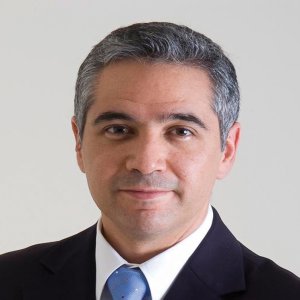Sustainable Rubber: Retreading Goals for Mexico's Tire Future

STORY INLINE POST
Q: The tire industry is predicted to grow to 2 billion tires a year in the next three decades, which could place a huge strain on the supply of raw materials and rubber. How is Bridgestone planning to address that in the long-term?
A: The tire industry is very traditional as it continues to use both synthetic and natural rubber. Our goal as a company is to supplant much of these raw materials with environmentally friendly options. Bridgestone is conducting an experimental study in Texas with guayule, a plant that grows in desert areas and can replace natural rubber. Producing a rubber-free car tire requires at least seven years of research before production goes ahead, but with guayule, it looks like production could start much sooner. The new technology is in its testing stage and will be ready for production in around two to three years. To replace raw materials, a reevaluation of the product is also needed, as well as the establishment of new rules to determine if these products meet environmental requisites. I am convinced that in just five years, this industry will be drastically different from today. If such new materials are introduced, the way to produce cars will change dramatically.
Q: What measures have you taken to reduce rolling resistance in your tires?
A: We have different kinds of technology applied to reduce rolling resistance. These efforts have two pillars: the design of different tires where one technology is applied to various designs to help reduce rolling resistance, and the dispersion of the pigments in the spec of the compound. This works at the nano-technological level, where the spec portion of the pigments is produced. The compound is uniform and measured in millimeters, hence why we need nanotechnology to disperse the pigments. We have other kinds of technology including run-flat, tires that can run with no air, which improves safety. We are currently improving the third generation of run-flats for OEMs and beyond. This technology was first produced in Japan and then extended to other facilities to sustain demand. With our five technical centers around the world, Bridgestone is constantly coming up with fresh developments for its tires, such as new polymers.
Q: What would you like to see happen in the next few years to address the negative impact of used tires on the Mexican market?
A: Used tires and how to dispose them in accordance with environmental rules is the responsibility of companies, final users, the government and the community as a whole. Mexico does not prohibit the importation of used cars unlike other Latin American countries. Every year, the government authorizes a quota of 1 million used tires a year for importation, but the reality is that closer to 4 million used tires come from the US annually. It is impossible to drive cars securely with such tires. But who will dispose of these old tires? Who is ultimately responsible? This is part of the major problem we face with used cars coming illegally from the USA.
Q: What role do you think innovation should play in the industry in using old tires to make rubber?
A: Along with Andellac and the government, we developed a national plan for the final disposal of used tires that started in Nuevo Leon with different points for final disposal. We recover 91% of the scrap and reuse it in our Cuernavaca plant. For this program to fully succeed, there needs to be a change in the Mexican culture toward the disposal of tires. Used tires can be used to build sports fields or can prove profitable in other ways. This is a big issue, but the government knows that more awareness about this is needed in Mexico.
Q: 40% of the heavy duty sector is made up of owneroperators. How are you planning to capture more business from them and to encourage them to use new tires?
A: Retreading makes the truck and bus sector different. The most important issue for owner-operators is the cost per kilometer and the lifespan of tires that can be obtained with retreading. Major fleets usually use new tires and then retread the tire carcasses two or three times. This requires a good quality carcass which Asian tires lack, but they still make up 50% of the market. Retread levels in the US stand at 1.5, meaning that the lifespan of tires circulating on US roads can be extended by 1.5 times. Mexico’s level is 0.7, due to there being 30% of poor quality carcasses out there that cannot be retreaded. The retread market sees a variation in quality depending on the producer. For example, Bridgestone has a plant in Leon, Guanajuato, that produces all the retread compounds we need, and our Bandag brand covers 45-48% of all retreading in Mexico for the truck and bus sector.
Q: What are you yearly investing in R&D, and how much of that goes to the tire business?
A: The most important investments we make are in tires, technology, new plants, and expansion in general. 80% of this is concentrated toward tires. The level of total investment varies from year to year but, in 2014, we are investing US$16 billion in new plants globally. In 2011, we finalized the expansion of our Cuernavaca plant, which went from 16,500 units a day to 20,000 at a cost of US$100 million. R&D also takes up a solid chunk of our budget, which is natural since Bridgestone is number one in total revenue for its sector. We have to maintain our number one place worldwide. In the US market, our participation varies between first and second place, depending on the segment. Across Latin America, except for Brazil, we are number one.
Q: What is Mexico’s importance to Bridgestone in terms of its global operations, and what has been your strategy to drive growth here?
A: Bridgestone has a significant participation in Latin America with different plants in countries such as Venezuela, Costa Rica, Brazil, and Argentina. In Mexico, we have plants in Cuernavaca and Monterrey. Mexico plays a very important role in our Latin America division, being the number one exporter of cars in the region with a close economic relationship with the US. Our operations in Mexico are strategic as the majority of the OEMs are already located here, new ones are arriving like Audi and BMW, and Hyundai may soon announce an investment. This means that in the next two or three years, Mexico will become the number one car exporter to the US. This will bring a major challenge to the industry regarding OE for car, light truck, and bus manufacturing, which Bridgestone is primed to meet. The Mexican heavy vehicle industry produces around 140,000 trucks and buses per year, and this total capacity is expected to double in the next ten years. As such, our expectations for the future are bright, since the considerable investments entering the Mexican automotive industry are backed up by a positive economic situation. Bridgestone benefits from already having a strategic position in Mexico as our Cuernavaca plant is 50% dedicated to OE. The engine of economic growth worldwide for the next ten years will be in developing economies, as they offer greater possibilities and potential for the future. For Bridgestone, Mexico is clearly within this group. During 2014, Mexico will probably return to healthy growth. Bridgestone expects to see growth across all segments of 2-2.5% above GDP for the next four years, translating to growth expectations of around 5.5-6%.
Q: What business strategies has Bridgestone put in place to support this projected growth?
A: Achieving this kind of growth is a big challenge. We already have 25% of the OE market share, and to support it we need more investment and expansion to cover the new capacity Mexico is seeing in terms of car plants. Of course, the challenge does not only lie in reaching the production level needed by the manufacturers, but also to ensure our products continue to meet their evolving quality demands as well. OE is a permanent challenge that pushes us to develop more competitive technology. We are talking about new green tires and ultra-high performance passenger tires, among others. Around 80% of our total production in Mexico is dedicated to the US market. All the cars that are exported to the US need to meet the highest international standards in order to compete in this market. For this reason, Mexico provides a good opportunity for Bridgestone to showcase its new technology and offer the best to the final user.



















